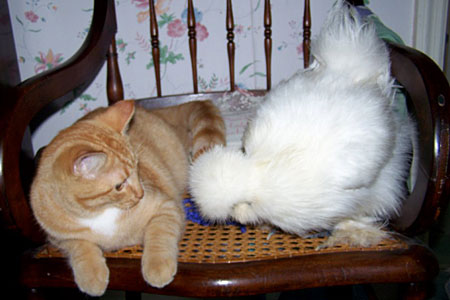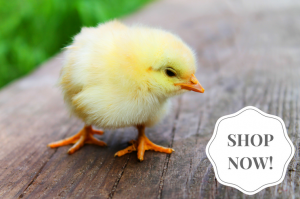
The details of exactly when and how Silkie bantam chickens came into being have been lost in the mists of time. The breed was first mentioned by Marco Polo, who wrote about “chickens with fur-like feathers and black skin” in his 13th century report of his explorations in Asia. Most likely Silkie chickens existed long before Marco Polo came along.
Physical Attributes
Ancient Silkies had only one variety — white. Today we have numerous color varieties, including buff, black, blue, and splash among many others.
The American Standard of Perfection first recognized Silkies in 1874 and today lists 13 different varieties. Although serious breeders like Cackle Hatchery® breed Silkies to the standard weight of 36 ounces or less, other sources offer non exhibition strains that may weigh as much as four pounds or even more.
Besides their fur-like feathers and pitch black skin, Silkie bantam chickens have other unusual physical attributes. They have five toes (some have six!), in contrast to four toes commonly seen in most other breeds.
They also have an ample head crest, leg feathers, dark purple walnut comb and wattles, and turquoise earlobes. The most popular varieties also have a beard and muffs.
Breed Qualities
Among the Silkie bantam’s outstanding qualities are persistent broodiness and conscientious mothering instincts. These traits make Silkies invaluable for hatching eggs — especially those of rare or non brooding poultry — without the need for an incubator.
Thanks to their propensity to brood, Silkie hens are not especially prolific layers. When they aren’t brooding, however, they are consistent layers of small eggs with tinted shells. And they often continue laying while other breeds take a break.
Silkies don’t fly, making them extremely easy to confine. And they are naturally people friendly. Silkie bantam chickens are therefore perfect as pets, especially for a family with small children.
Helpful Links
How to Care for Bantam Chicks Shipped By Mail
And that’s today’s news from the Cackle Coop.
Gail Damerow has written numerous books about poultry, including The Chicken Encyclopedia.


When will you have silkie chicks available?